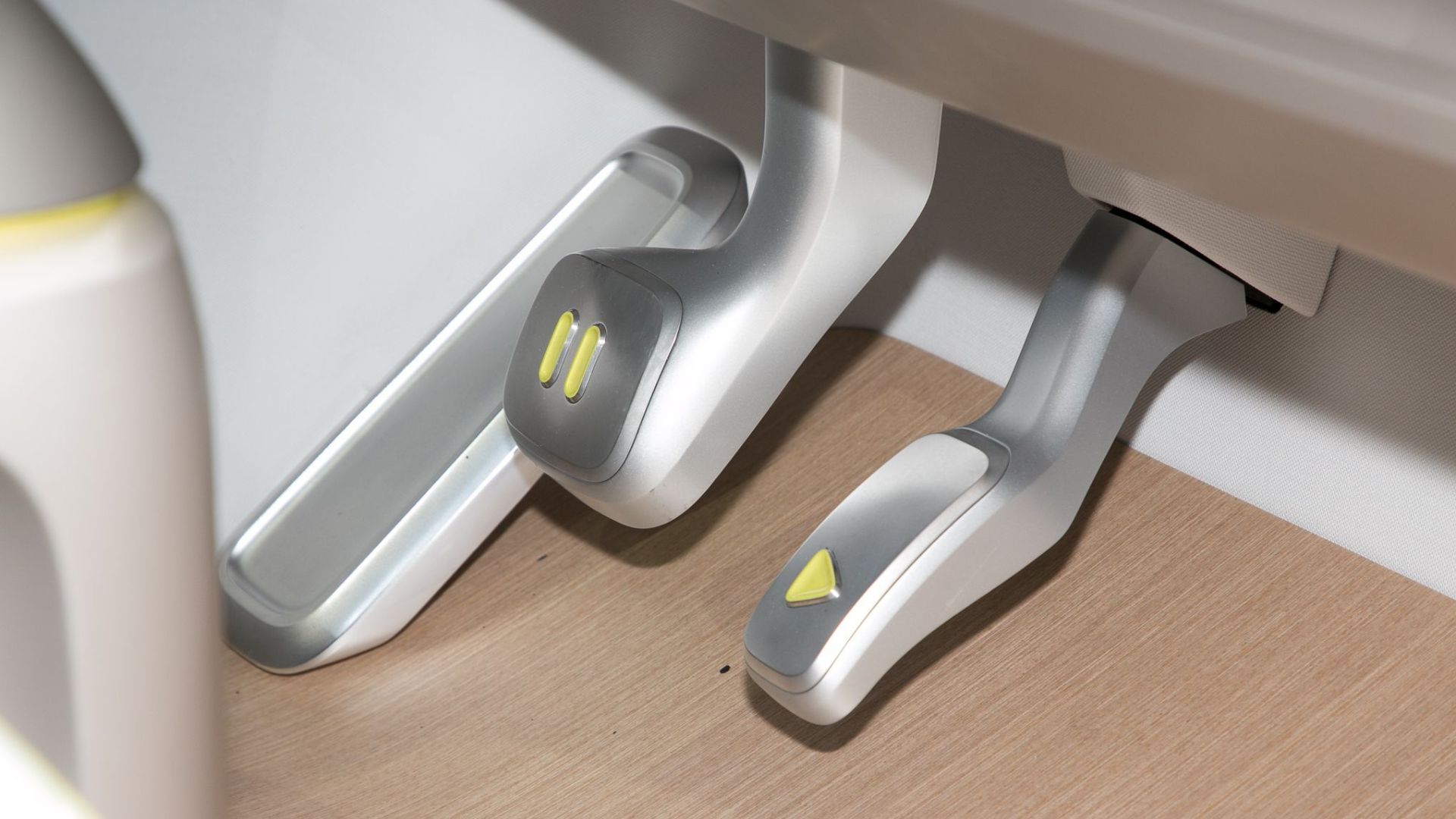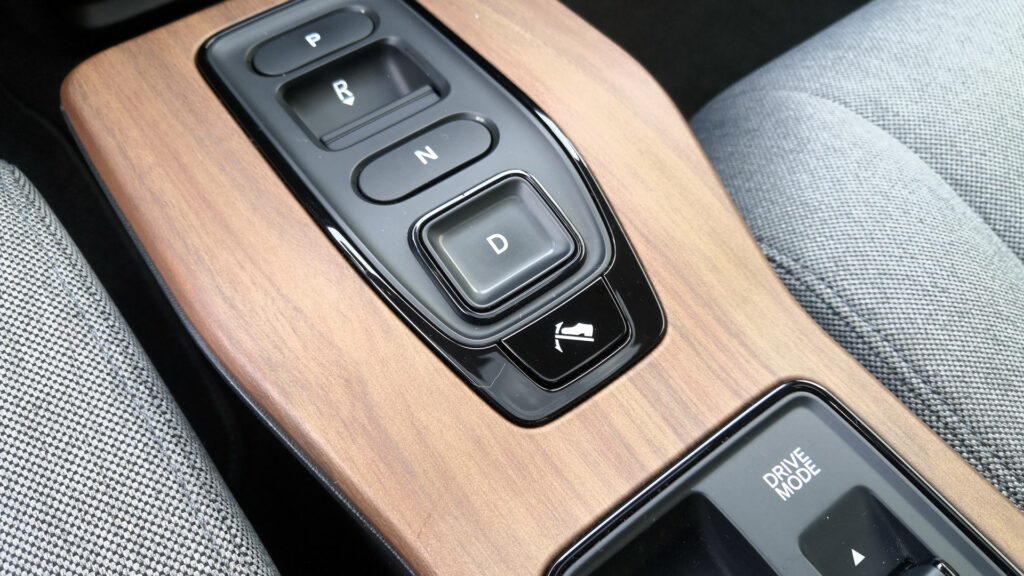Is one-pedal driving essential in an electric car?

One-pedal driving is supposed to revolutionize the way we drive electric cars. However, some manufacturers deliberately choose not to offer this driving mode on their vehicles. Is it really useful or is it finally a gadget we can do without?
Among the differences between electric cars and thermal cars, drivers often highlight the famous regenerative braking. In short, this allows the car to slow down without pressing the brake pedal, while energy is recovered and thus the battery recharged a bit.
Some manufacturers have taken this principle a little further, making it possible to go to a complete break relying solely on regenerative braking. This is called one-pedal driving. Some see it as a necessary condition to drive their vehicle, while others want to be able to do without it. What does it allow? Is this really necessary?
One pedal to do everything, or almost
The concept of one-pedal driving is not new. The second-generation Nissan Leaf, released in 2017, created a lot of buzz by offering a dedicated driving mode with e-pedal technology. Before this second generation of Leaf, the first didn’t let it close completely. The operation was more classic: you had to brake with the left pedal to be able to stop.
Of course, the new driving mode means an adaptation time for those coming from the world of thermal vehicles or even electric vehicles without one-pedal driving. The first few days behind the wheel of a car that actually slows down significantly when you release the accelerator pedal and doesn’t require you to physically brake to stop.
In practice, it’s not a question of completely releasing the accelerator pedal all at once, but a question of proportioning your acceleration and braking with just the right pedal. To make a telling analogy, imagine a radio-controlled car remote control: there are no brakes, but enough to move the car forward or slow down with the same trigger.
As is often the case with such a drastic change in driving style, initial feedback can be negative. It’s unnatural – when you have decades of thermal driving behind you – and sometimes uncomfortable, as the car slows down a lot when you take your foot off the right pedal. But, once the first moments of adaptation are passed, it is a real pleasure.
What does one-pedal driving change?
Thanks to one-pedal driving, energy recovery is maximized when decelerating, as mechanical brakes are not used. Then we can imagine that consumption is highly optimized and that can make a real difference, especially in urban areas. During the WLTP approval cycle, some manufacturers claim 25% more autonomy thanks to one-pedal driving. In fact, the increase in consumption compared to powerful regenerative braking is negligible, but without stopping completely. This is far from the number 1 argument for one-pedal driving.
The real benefit is in terms of driving comfort, as the brake pedal is only for emergencies, and no longer for systematic stopping. By anticipating correctly, there’s no longer a need to touch the brake pedal for red lights, stop signs or roundabouts. In the city, it’s actually a more pleasant drive where the key word is anticipation.


For drivers, the experience is generally excellent after the first few laps are passed. Low-speed maneuvers are performed with only the accelerator pedal: to park in reverse, it’s a small revolution.
Naturally, a side effect of this one-pedal driving is increased brake pad life. Without exaggerating, in everyday life and in urban environments with the Tesla Model Y, for example, which benefits from one-pedal driving, braking is a truly exceptional task. As drivers, we no longer want to do without it.
Regular drivers no longer want to do without it
When we quickly survey electric car drivers, one-pedal driving is an advantage they don’t want to lose. Maneuvering with your foot on the brake feels like a significant regression, as does keeping your foot on the brake at a red light to avoid moving forward.
For drivers who have never experienced one-pedal driving, this all sounds very abstract, but it is very real. This becomes a strong argument even when changing cars, which can be easily verified when you have to test drive a new car. There are plenty of good electric cars available, but without one-pedal driving, some models are out of the picture from the start.
Manufacturers’ official views on one-pedal driving differ from time to time, as Nissan’s example showed us with the Aria in 2023. While the e-pedal system existed on the Leaf 2, Nissan decided to drop its new electric car. Its justification? Some customer feedback was negative, particularly regarding low-speed maneuvering. However, this argument doesn’t hold water: on the Leaf 2, it was an optional driving mode. So drivers had the option to use one-pedal driving or not depending on their preference.
There are no statistics showing the proportion of consumers who make one-pedal driving the preferred argument for an electric car. However, it is a safe bet that this proportion will only increase as the share of electric vehicles in sales increases. You don’t know how essential it is until you taste it. But not offering it at all in 2024 is inexcusable. Let us still try to understand why this always happens.
In 2024, not offering one-pedal driving is unforgivable
The above was more or less an ode to one-pedal driving. However, some manufacturers do not yet offer the option, even though it should be the default way to drive an electric car. The Renault 5 E-Tech is a classic example of a promising electric car that many people wanted to own when it was invented, but were disappointed before it was available to order.
Renault has actually confirmed that one-pedal driving will not be included when the car is released, without closing the door on availability next year. Drivers of thermal cars who also own electric cars may prefer a more traditional driving mode, so as not to compromise their muscle memory. Likewise, newcomers to electric mobility may feel more comfortable in a car that drives almost like a thermal car. These are often arguments that are taken by manufacturers who do not offer one-pedal driving.
To these manufacturers, we can reply that instead of forcing the hands – or rather the legs – of consumers, it is up to them to leave the choice of different driving modes. However, a successful one-pedal driving offering involves software development that is not trivial to manage the transition between regenerative braking and locking of the wheels when completely stopped. This is obviously more complicated than coasting once the speed drops to 10 km/h or less.
This is what prompts many manufacturers to take the easy route by skipping one-pedal driving. Moreover, we can imagine that on a manufacturing platform shared between thermal and electric engines (for example, for the Peugeot e-208), the fact of not bothering with one-pedal driving allows the resulting savings.
However, the number of potentially lost customers is already significant, and is only likely to increase. So all manufacturers reluctant to this famous one-pedal driving would do well to review their copy, if they want to try to win back the drivers who have moved on to the competition.
If you liked this article, you might like the following: Don’t miss them by subscribing to Numerama on Google News.





